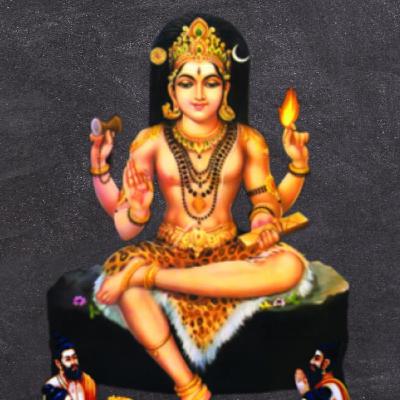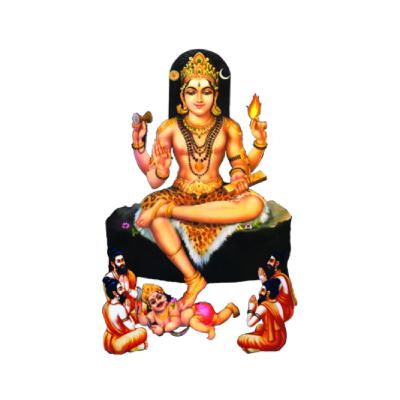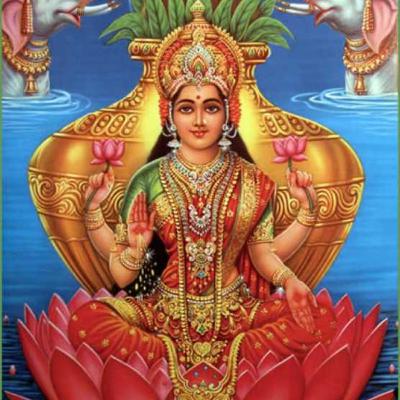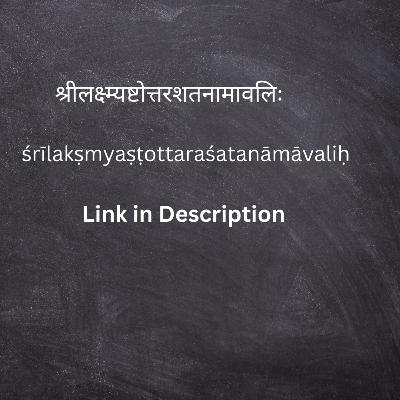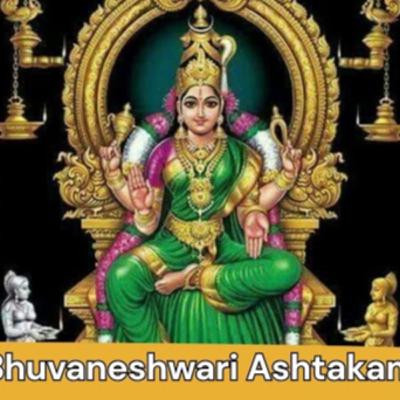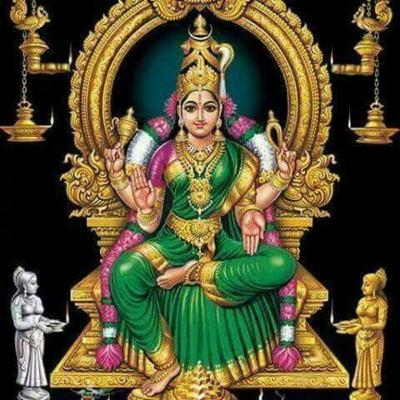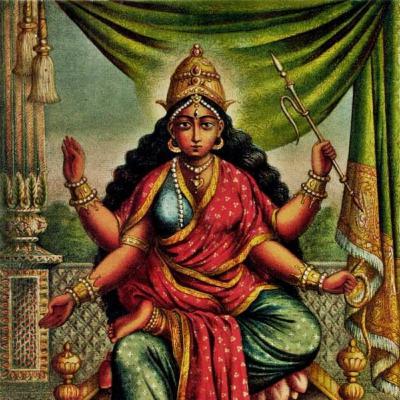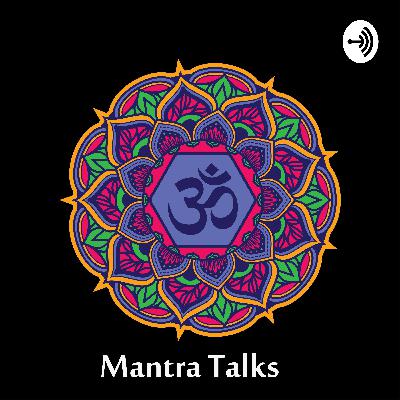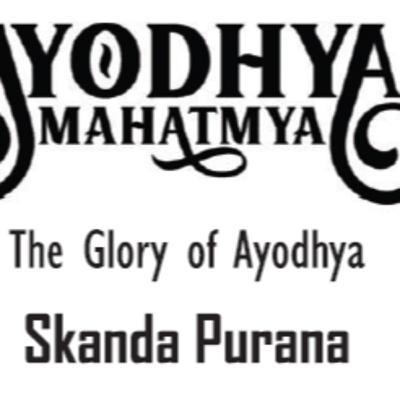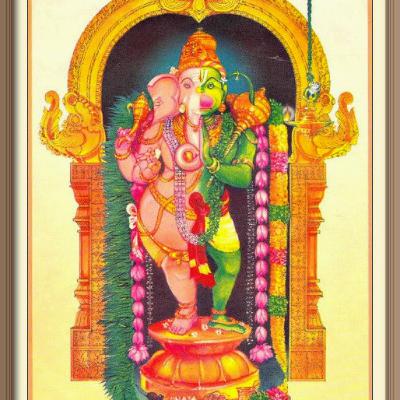Discover Mantra Talks
Mantra Talks

Mantra Talks
Author: Koushik k
Subscribed: 28Played: 222Subscribe
Share
© Koushik k
Description
Mananat-trayate iti Mantrah. Mantra means anything which protects you when you remember it constantly, think about it constantly and recollect it and recite it.
Hence the supreme god also has the name Mantra.
Listen to talks about Hinduism - The sanatana dharma , about pages from Puranas, upanishads and mantra shastras and everything that protects us when we think about it, discuss about it and and learn about it
Hence the supreme god also has the name Mantra.
Listen to talks about Hinduism - The sanatana dharma , about pages from Puranas, upanishads and mantra shastras and everything that protects us when we think about it, discuss about it and and learn about it
43 Episodes
Reverse
A stotra on doing mental worship of dakshinamurthy on this auspicious guru purnima day. #gurupurnima
Trailokya Sammohana Dakshinamurthy Kavacham From dakshinamurthy Samhita. A rare and ancient kavacham made up of dakshinamurty mantras, that was initiated to King Harishchandra by Sage Narada, originally initiated to goddess Lakshmi by lord Narayana. she chanted this kavacha for increasing all kinds of wealth. The phalashruti says one who chants this kavacha attiains strength, glory, wisdom and wealth, by chanting this kavacha with devotion, the practitioner attains the power to subdue or conquer three worlds (i.e.) everything becomes favorable to the sadhaka,
A powerful hymn on goddess lakshmi sung by Indra the king of gods when she emerged from the milky ocean. Pleased by this hymn goddess granted two boons to indra, Indra prayed. may you never abandon the three worlds. (i.e.) may the world be prosperous always) and secondly never turn away your sight from the devotee who chants this hymn (i.e.) always bless your devotees with your gracious sideways glance.for more books, videos, and podcasts visit https://linktr.ee/authorkoushikhttps://authorkoushik.co.in
Lakshmi Ashtottara Shatanama Stotra the hymn of hundred and eight names of Lakshmi is an important hymn of lakshmi which was taught to goddess Parvati by Lord Shiva. this hymn is called daridrya mochana - that which liberates those who recite from all kinds of poverty. these names are used to offer flowers in the feet of goddess Lakshmi #happy chaitra Navaratri and Happy Ugadi.https://www.amazon.in/Lakshmi-Ashtottara-Shatanama-Stotra-Commentary-ebook/dp/B0956JW8P7
Bhuvaneshwari Trishati - Three hundred names of Bhuvaneshwari that establishes the relation of the goddess with the Maya beeja in different ways
Bhuvaneshwari Ashtakam octet that praises goddess bhuvaneshwari as given in the bhuvaneshwari Panchangam
Bhuvaneshwari Ashtakam from Rudrayamala Bhuvaneshwari Panchangam
Bhuvaneshwari Ashtottara Shatanama Stotram from Rudrayamala Bhuvaneshwari Panchangam
Hundred and Eight names of Bhuvaneshwari
Source: Bhuvaneshwari Panchangam
https://sanskritdocuments.org/doc_devii/bhuvaneshvaryaShTottarashatanAmastotram2.html
for more visit: authorkoushik.co.in
This beautiful hymn shiva suvarna mala stotra is composed by shree adi shankara bhagavad pada on lord Shiva. The hymn is called Suvarna mala stuti. The hymn of beautiful garland of letters.
Suvarna ,also means gold. Acharya shankara makes a garland of beautiful alphabets of Sanskrit and offers that garland to lord Shiva. The hymn has fifty verses each starting with an alphabet of Sanskrit in the alphabetical order.
Every line ends with the phrase ‘sāmba sadāśiva śambho śaṅkara śaraṇaṃ me tava caraṇayugam’ meaning O sadāśiva who is always accompanied by all mother, O the birth places of all good and peace, O the doer of good, your holy feet is my resort.
The use of all alphabets of Sanskrit makes this hymn powerful and poetic at the same time. It also blesses us with the virtue and merit of worshipping the supreme god Shiva with all the alphabets of the sacred language. According to over sacred scriptures every letter is divine, every alphabet is a mantra. Matruka mantras (as they are referred to in the tantra shastras.
By chanting this hymn, we indirectly chant all the fifty-one letters which are seed mantras. Acharya shankara prays to shiva for different things and good qualities which are very essential to any serious seeker. He prays supreme god for guidance and also praises his greatness through this wonderful hymn.
To know the deeper meaning of this hymn 𝗚𝗲𝘁 𝘆𝗼𝘂𝗿 𝗰𝗼𝗽𝘆 𝗼𝗳 𝗦𝗵𝗶𝘃𝗮 𝗦𝘂𝘃𝗮𝗿𝗻𝗮 𝗠𝗮𝗹𝗮 𝗦𝘁𝘂𝘁𝗶 : 𝗔 𝗚𝗮𝗿𝗹𝗮𝗻𝗱 𝗼𝗳 𝗟𝗲𝘁𝘁𝗲𝗿𝘀 𝗳𝗼𝗿 𝗦𝗵𝗶𝘃𝗮 by clicking the link below
https://www.amazon.com/dp/B08YMT96XC
Ayodhya Mahatmyam is a text that consists of 10 chapters describing various holy waters and holy shrines of ayodhya, this text is a part of Vaishnava Kanda from Skanda Purana.
Chapter Ten describes about the internal sacred water, (antah teeertha, Mada Gajendra, Surasaa, Pindaaraka, sarayu and Janmasthaana
Ayodhya Mahatmyam is a text that consists of 10 chapters describing various holy waters and holy shrines of ayodhya, this text is a part of Vaishnava Kanda from Skanda Purana.
Chapter Nine of Ayodhya Mahatmyam tells us about Gaya Koopa, Pishachamochana, Maanasa teertha, Tamasaa nadi, mandavya ashrama, Parashara ashrama, sita kunda, Bhairava, Bharata Kunda and Jataa Kunda
Ayodhya Mahatmyam is a text that consists of 10 chapters describing various holy waters and holy shrines of ayodhya, this text is a part of Vaishnava Kanda from Skanda Purana.
Chapter Eight of Ayodhya Mahatmyam tells us about Rati and kusumayudh Kunda, Mantreshwara shiva, Sheetala devi, Bandi devi, Choodaki Devi, Maharatna teertha, durbhara, Mahaabhaara Sarovara, Mahaavidya teertha, Greatness of Dugdheshwara
Ayodhya Mahatmyam is a text that consists of 10 chapters describing various holy waters and holy shrines of ayodhya, this text is a part of Vashnava Kanda from Skanda Purana.
Chapter Seven of Ayodhya Mahatmyam tells us about the glory of ponds Ksheerodaka, Bruhaspati Kunda, Rukmini Kunda, Dhana yaksha kunda, Vashishta Kunda, Saagara Kunda, Yogini Kunda, Urvashi Kunda, and Gosharka Kunda
Ayodhya Mahatmyam is a text that consists of 10 chapters describing various holy waters and holy shrines of ayodhya, this text is a part of Vashnava Kanda from Skanda Purana.
Chapter Three of Ayodhya Mahatmyam describes the glory of Sita Kunda, Goprataara, Guptahari & Sarayu Gharghara sangama, Rama ascending to his abode.
Ayodhya Mahatmyam is a text that consists of 10 chapters describing various holy waters and holy shrines of ayodhya, this text is a part of Vashnava Kanda from Skanda Purana.
Chapter Five of Ayodhya Mahatmyam tells us about the story of sage kautsa, the greatness of Sambheda teertha and sarayu tilodaki.
Ayodhya Mahatmyam is a text that consists of 10 chapters describing various holy waters and holy shrines of ayodhya, this text is a part of Vashnava Kanda from Skanda Purana.
Chapter Four of Ayodhya Mahatmyam discusses the greatness of Dharma hari and the holy water of Swarnakhani
Ayodhya Mahatmyam is a text that consists of 10 chapters describing various holy waters and holy shrines of ayodhya, this text is a part of Vashnava Kanda from Skanda Purana.
Chapter Three of Ayodhya Mahatmyam tells us about the holy waters Svargadwara, the holy water body through which lord rama ascended to heavens taking every being of ayodhya, the greatness of Chandrahari, lord hari who was worshiped by the moon god, and the greatness of sahasrachandra vrata a vow to please moon god.
Ayodhya Mahatmyam is a text that consists of 10 chapters describing various holy waters and holy shrines of ayodhya, this text is a part of Vashnava Kanda from Skanda Purana.
Chapter Two of Ayodhya Mahatmyam tells us about the holy waters of ayodhya Brahmakunda, RunaMochana, Paapamochana, Sahasradhaara teertha
Ayodhya Mahatmyam is a text that consists of 10 chapters describing various holy waters and holy shrines of ayodhya, this text is a part of Vashnava Kanda from Skanda Purana.
Chapter one of ayodhya Mahatmyam talks about Lord Vishnu Hari
Ganesha and Hanuman - Adi Antha Prabhu. A combined form of Ganesha and Hanuman worshiped in a temple in chennai. some scriptural indications to the similarities and oneness of Ganesha and Hanuman.
for more books, videos, and podcasts visit https://linktr.ee/authorkoushik


